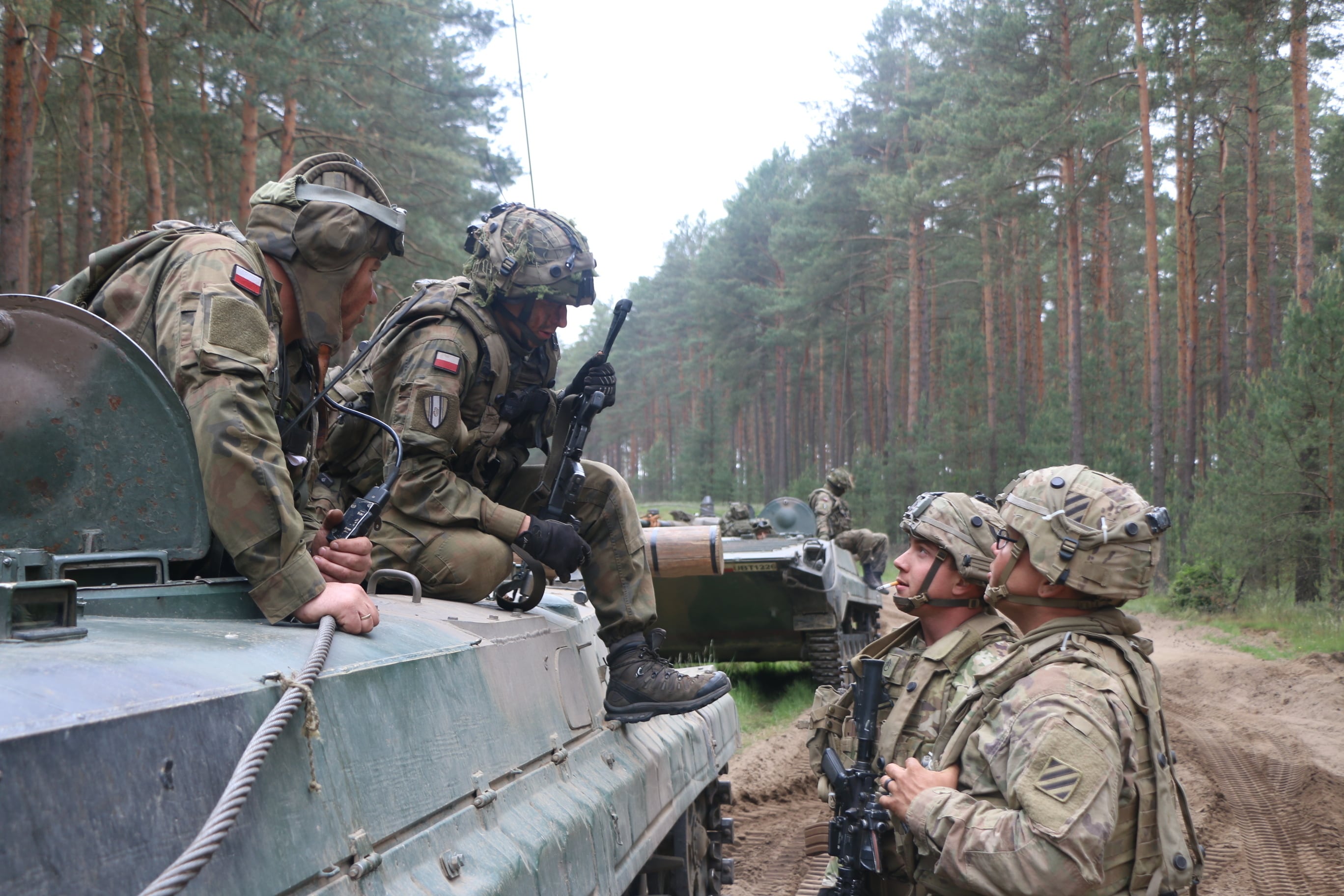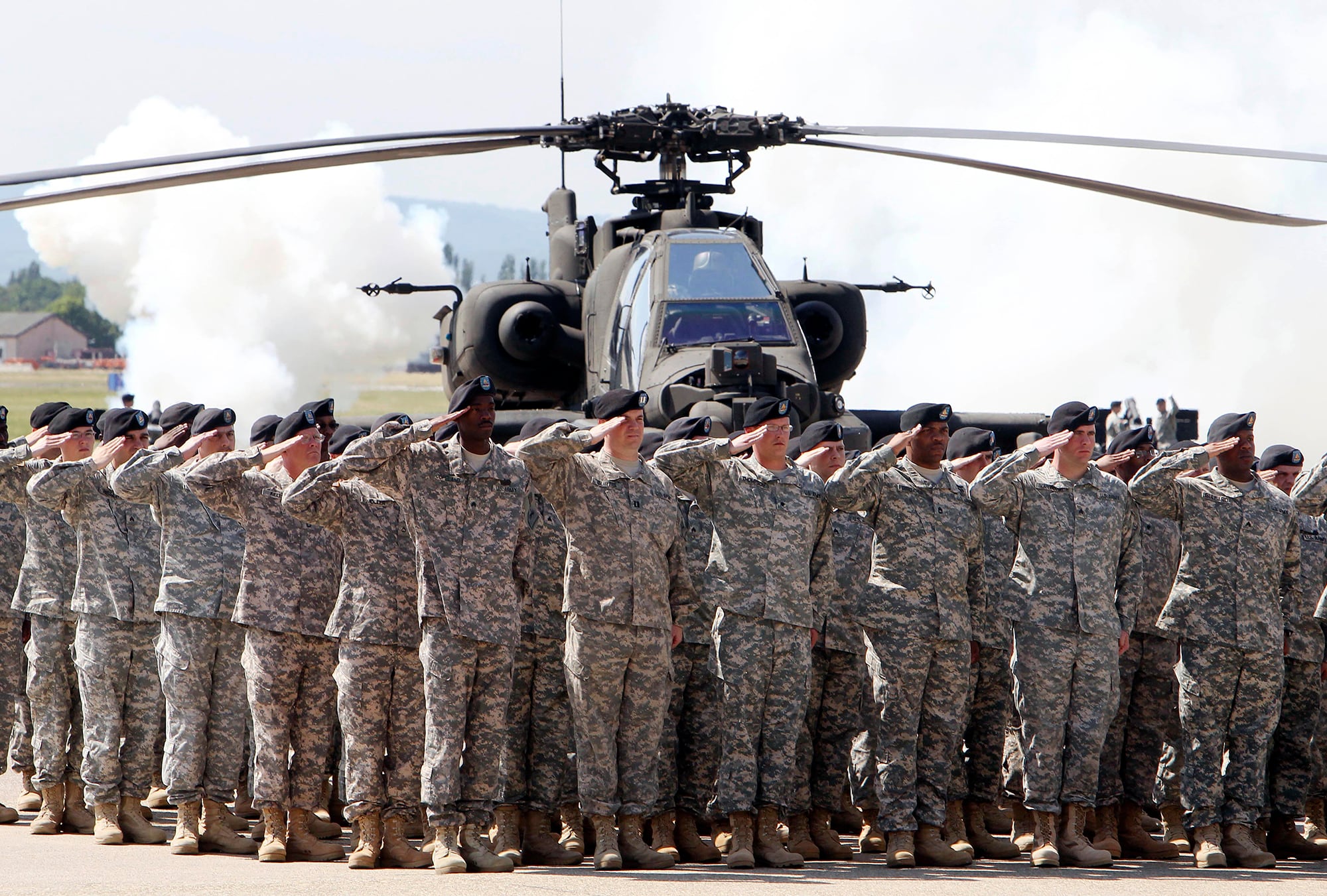ARLINGTON, Va. – The repositioning of troops combined with big equipment upgrades by U.S. allies in Europe hints at how U.S. military resources might be deployed should Russia push westward.
Secretary of the Army Ryan McCarthy spoke with reporters over a 30-minute teleconference Wednesday during a European trip that had been scheduled for March but which was delayed due to the COVID-19 Pandemic.
McCarthy summarized some of his visit, which had him meeting with foreign leaders in Belgium, Poland and the United Kingdom before being peppered with reporter questions.
RELATED

Chief among those questions were the recent announcement by President Donald Trump that he will reposition 10,000 troops out of Germany in response to the country’s failing to meet the 2 percent of Gross Domestic Product spending on their defense.
Trump has long criticized what he perceives as a lack of NATO spending in proportion to the United States’ commitment. The NATO mission primarily serves to protect member states and allies from any Russian incursion, begun during the reign of the Soviet Union in the post-World War II period.
McCarthy declined to provide details about exactly where the troops might be relocated, deferring to his boss, Secretary of Defense Mark Esper. But, McCarthy did say that news of those plans would likely be out “in the coming weeks.”
Military Times previously reported that allies, especially Baltic states, worry that an overall Europe drawdown could jeopardize their security. Early talks in June looked to put troops not only out of Germany, but possible to redeploy them to the INDOPACOM theater to counter growing Chinese military aggression.
McCarthy made no mention of moving troops out of the continent.
He also focused some of his responses on the growing equipment, capabilities race between Russia and NATO nations.
“We have seen a considerable increase in investment in LRPF (Long-Range Precision Fires) and what we call anti-access, area denial, (A2AD),” he said.
Both capabilities have grown in both sophistication and scale over time, he said. He added that the seasonal military exercises by Russia, have also grown in numbers of troops and equipment.
The United States has ramped up spending in both of those areas and other modernization goals in recent years, putting LRPF as the Army’s top modernization priority.
McCarthy noted that a partnered project with British military counterparts is seeing shifts in their fires capabilities. Right now, however, U.K. leaders are weighing options between either expanding their use of HIMARS, or High Mobility Artillery Rocket System and options with the Precision Strike Missile being developed by the United States.
On the aviation side, the British are buying more CH-47 Chinook helicopters but also are likely to be a part of the Future Vertical Lift program that the Army is spearheading, especially the Long-Range Assault Aircraft, also under development.
Further north, Norway is building out its armor with new main battle tanks. McCarthy added that what he likes to communicate to allies is “logistics.”
Rail, roads, the “ability to locate capability is everything.”
For many years having appropriate permissions to move heavy equipment such as tanks through multiple international borders, over bridges and on rail has hampered fast, effective deployment of manpower and equipment in training exercises in Europe.
Todd South has written about crime, courts, government and the military for multiple publications since 2004 and was named a 2014 Pulitzer finalist for a co-written project on witness intimidation. Todd is a Marine veteran of the Iraq War.





